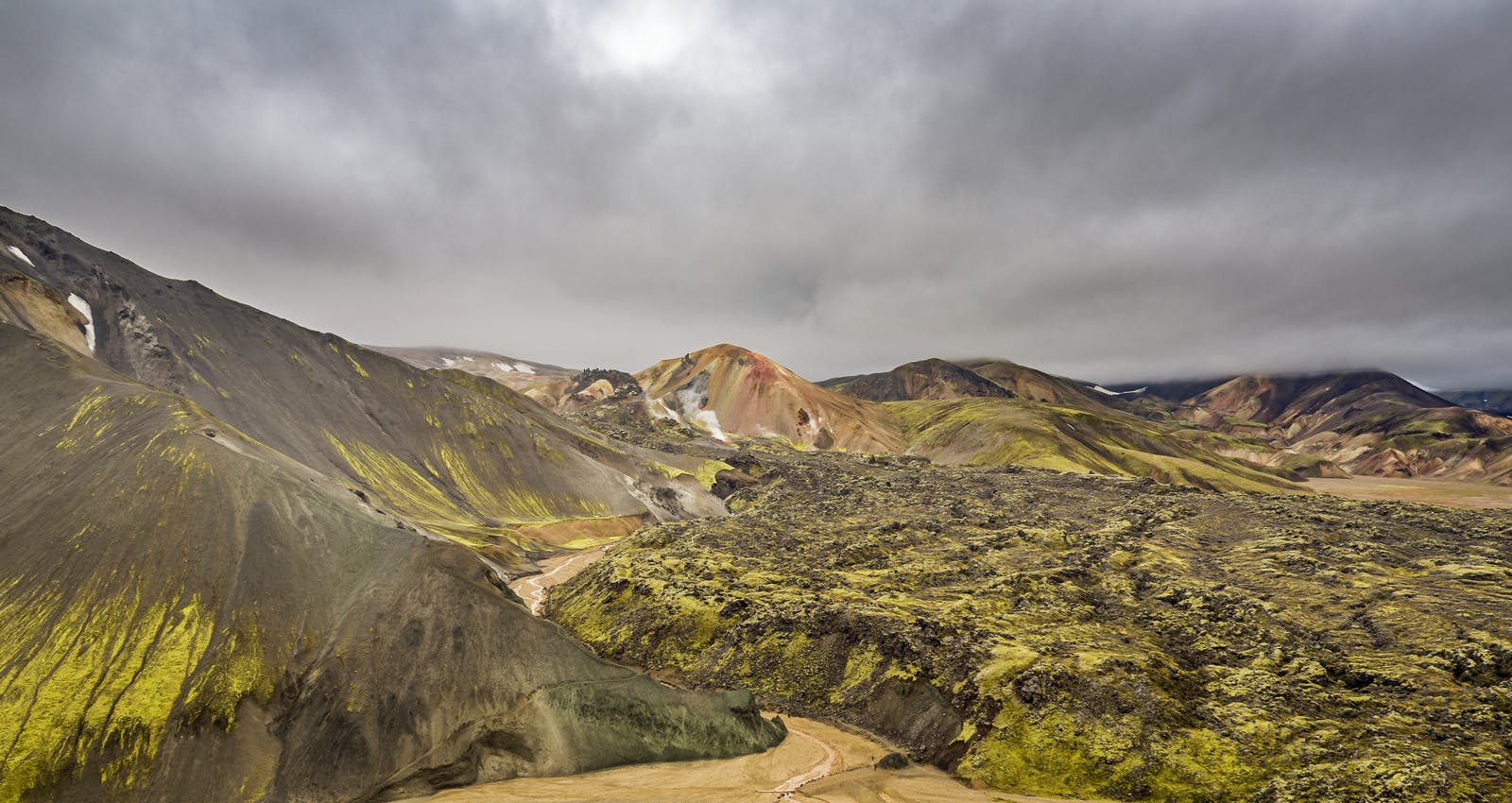
Brennisteinsalda Volcano
Brennisteinsalda, a volcano in the south of Iceland standing at 855 metres above sea level but only 100 m above its surrounding. It is situated near Landmannalaugar and Hekla.
What Type of Volcano is Brennisteinsalda?
Brennisteinsalda is a small volcano or eruptive vent located in the Landmannalaugar region of the interior Icelandic Highlands. It is known for its vividly coloured slopes, caused by the presence of various minerals and volcanic materials.
Where is Brennisteinsalda Located?
Brennisteinsalda sits within the Landmannalaugar area, a geothermal region known for its colourful rhyolite mountains, hot springs, and rugged landscapes. Landmannalaugar is a popular hiking destination and is accessible during the summer months.
What is the Meaning of Brennisteinsalda?
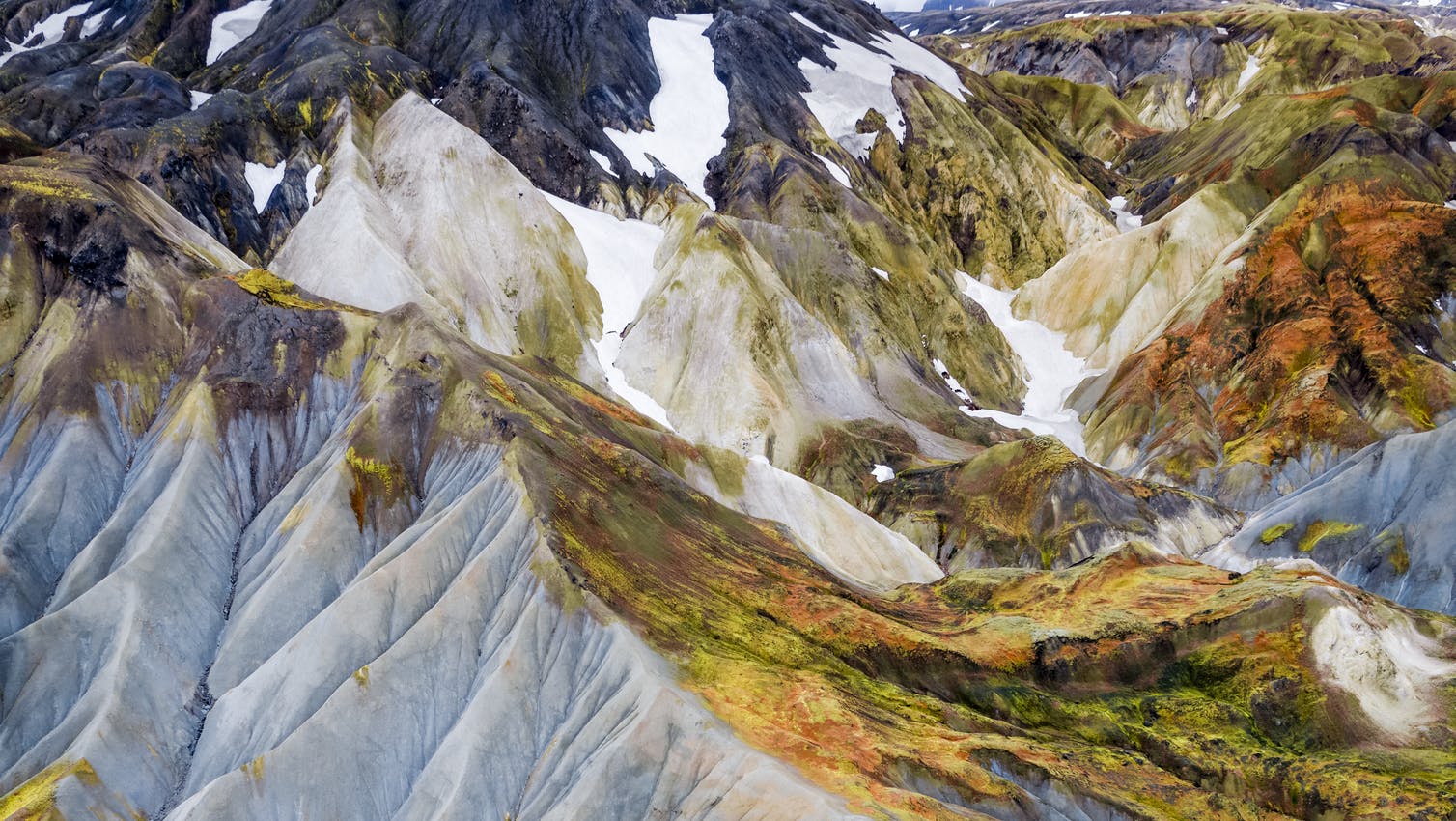
Brennisteinsalda means Sulphur Hill in English; the name comes from the yellow and orange sulphur spots that have coloured the sides of the volcano. Considered one of the most colourful mountains in Iceland, it also boasts bright green from mosses, blue and black from lava and ashes, and a rich red from iron compounds in the rock.
Is Brennisteinsalda an Active Volcano?
The mountain is still visibly an active volcano with hot sulphur vents and vapours emitting from its sides. However, there are no indications that there's an imminent eruption.
Where Can You Learn About Volcanoes in Iceland?
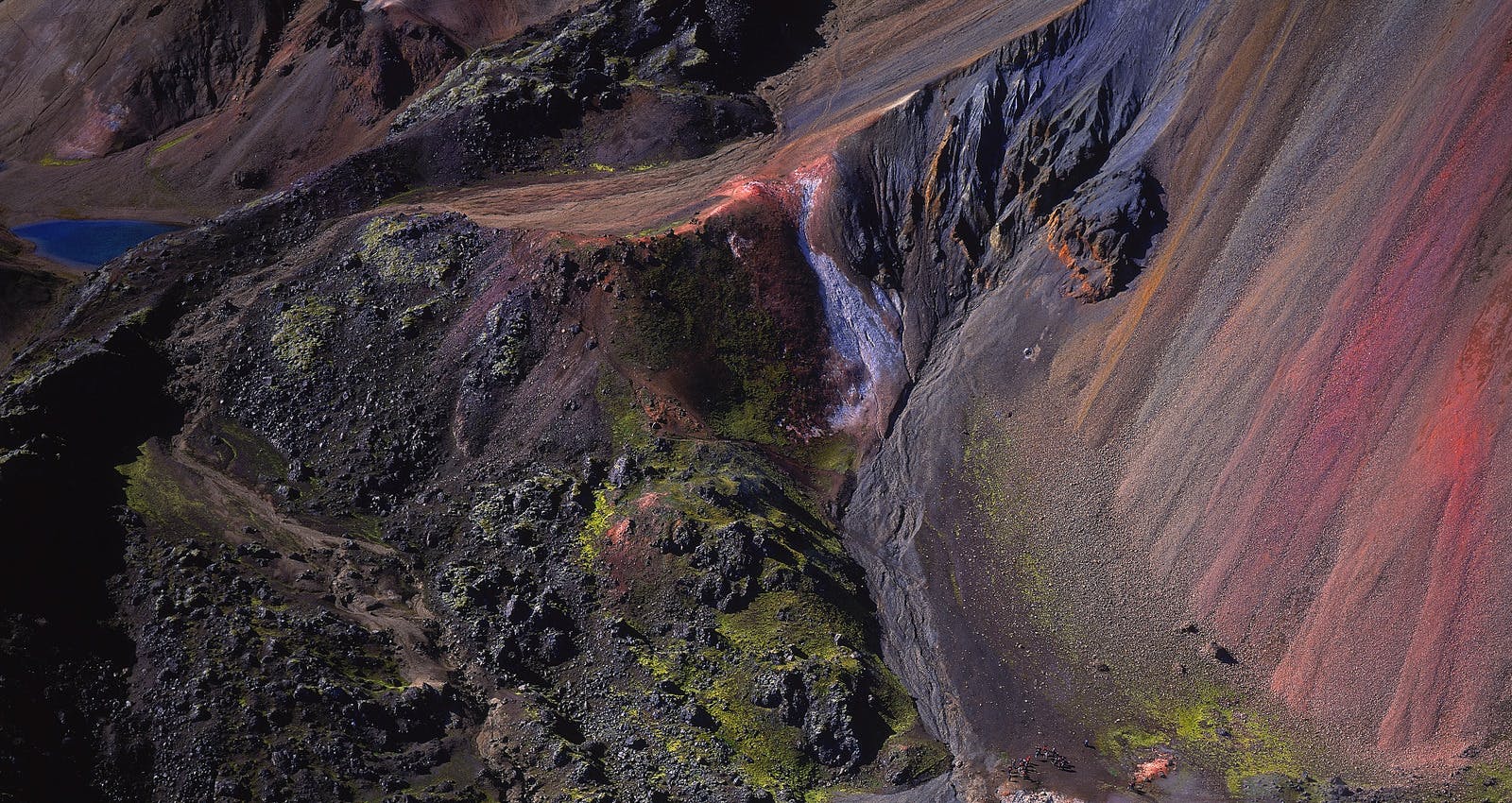
Perlan's Forces of Nature exhibition allows guests to feel the power of volcanoes, earthquakes, and geothermal energy that powers the island. Guests will learn that volcanoes form when heat and pressure build up beneath the earth's surface. The earth's weak points tend to be along fault lines where tectonic plates converge or diverge, as in Iceland's case.
Perlan's exhibition shows that volcanic activity in Iceland is so diverse that researchers typically speak of "volcanic systems" rather than individual volcanoes. The island has 30 active volcanic systems, each with many types of volcanoes. Perlan also has exhibitions featuring ice caves, northern lights and geology.
Iceland is one of the most volcanically active regions in the world — if you’re curious which ones are still rumbling, explore the active volcanoes in Iceland.
What colours can be seen on Brennisteinsalda?
Brennisteinsalda, is a very colourful mountain. Travellers can see yellow, orange, green, blue, black and red hues. The colours come from minerals and natural elements like ash, iron, moss, lava and sulphur.
What Attractions are Close to Brennisteinsalda?
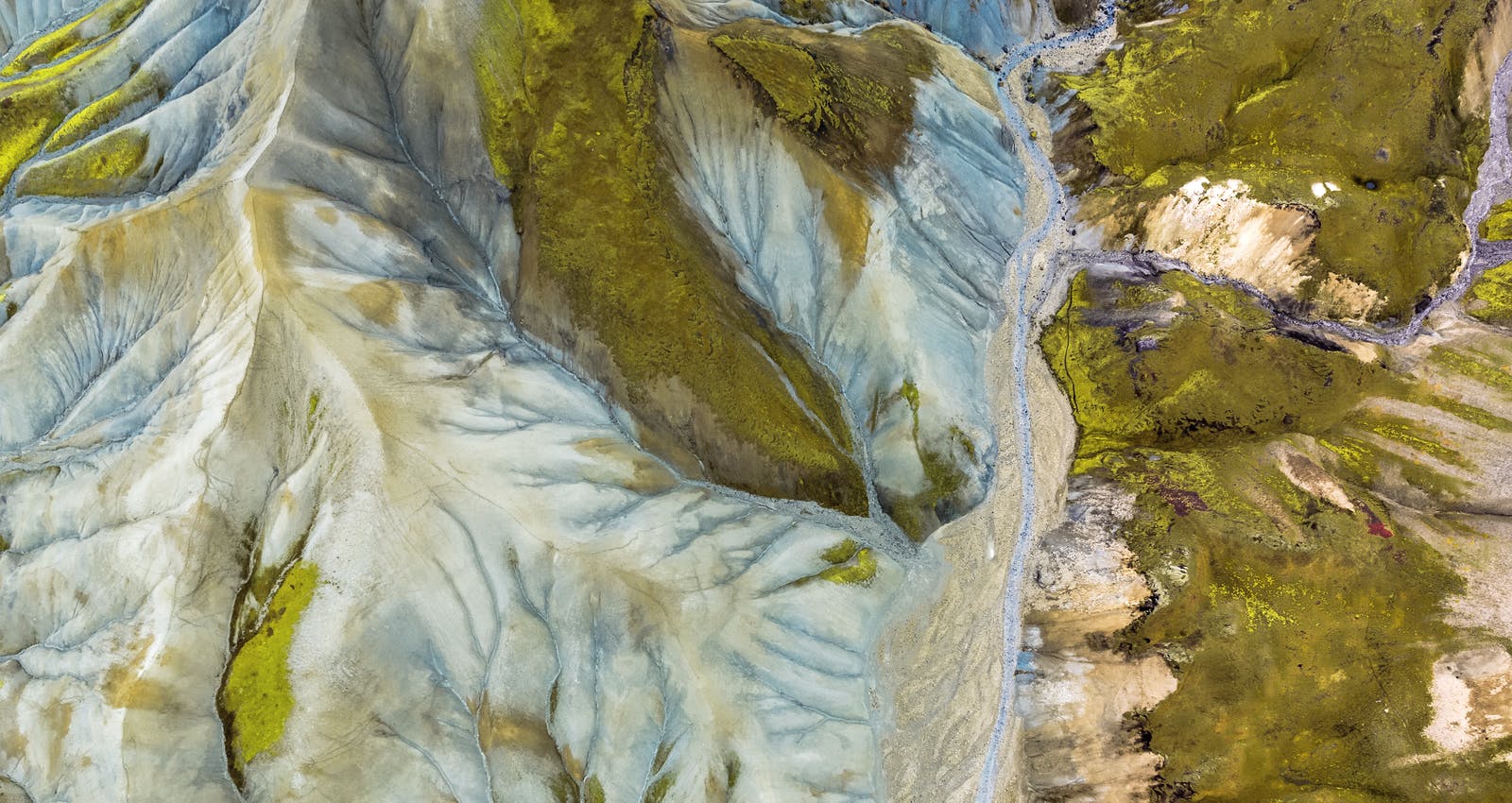
Landmannalaugar
Nearby Landmannalaugar is a major hub for hikers, and for very good reason. There are several well-maintained trails throughout the region that range from day hikes to multi-day treks. The landscape is one of wonder, with vast valleys, colourful rhyolite mountains, hot springs, and riverbanks.
Landmannalaugar is known for its natural geothermal hot springs. After a day of hiking or exploring, soaking in the warm waters of the hot springs is a popular and relaxing activity. Note that there are designated areas for bathing to protect the environment.
Laugavegur Trail
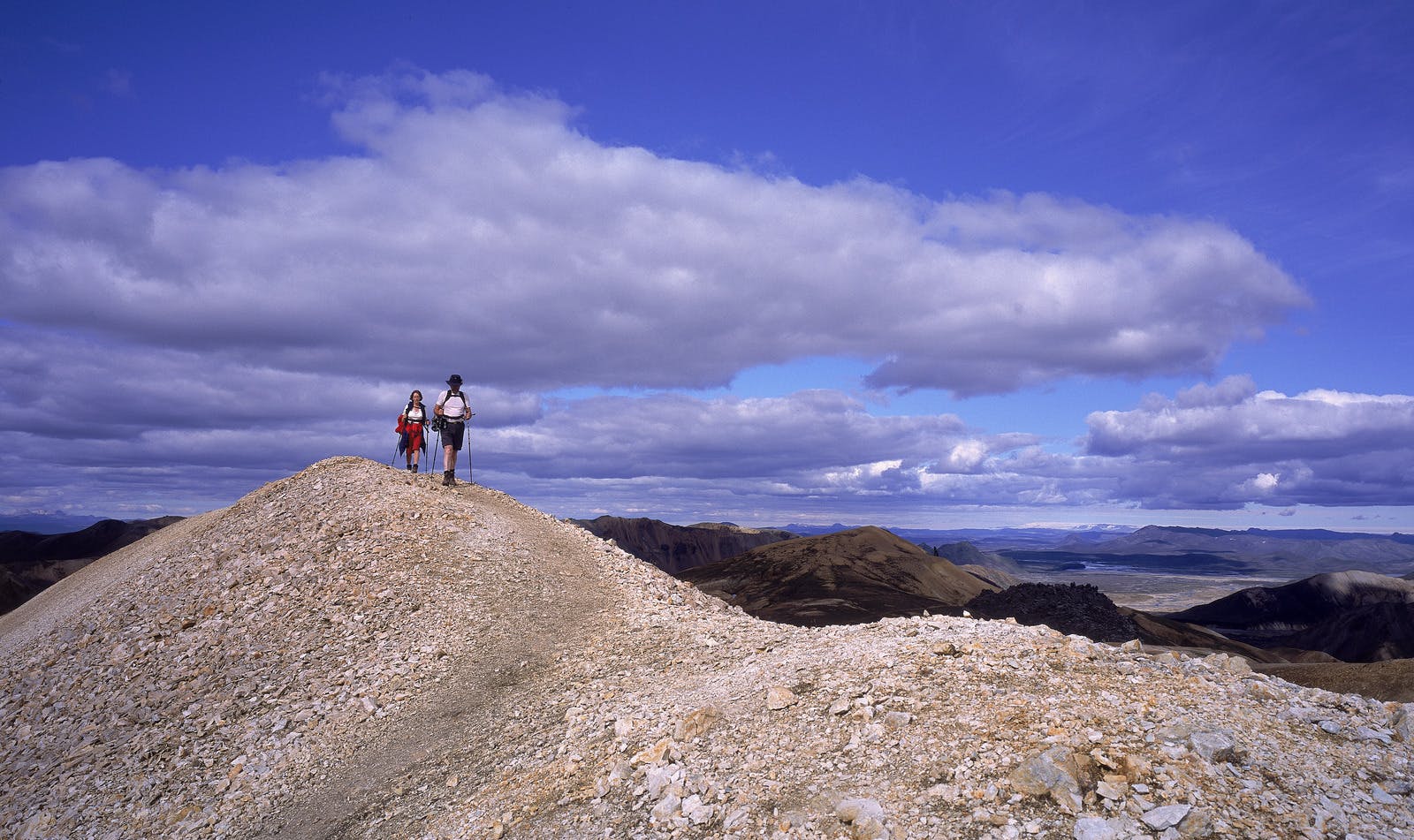
The wildly popular Laugavegur hiking route from the Landmannalaugar region to the Þórsmörk area is a 55-kilometre, four-day hike that attracts backpackers and hikers from around the world. If you're coming to Iceland to hike just one trail, this is the one. Its popularity stems from the variety of landscapes along the way: bubbling hot springs, vast glaciers, beautiful mountains, stunning waterfalls, and roaring rivers.
Bláhnúkur
This colourful mountain near Brennisteinsalda offers a challenging but rewarding hike. The views from the top are spectacular, showcasing the surrounding landscapes.
Hekla Volcano
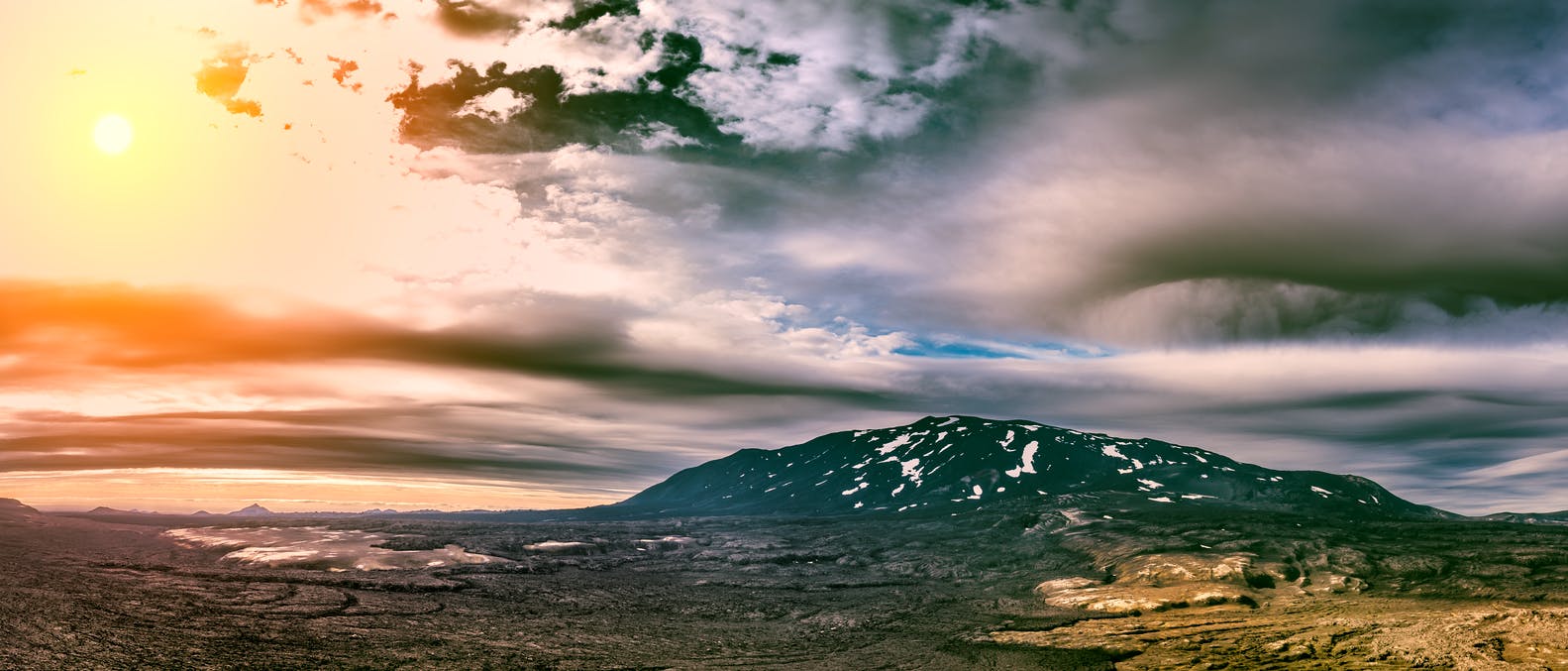
While not immediately next to Landmannalaugar, Hekla volcano is a prominent and active volcano in the vicinity. It's one of Iceland's most famous volcanoes and has played a significant role in the country's history and folklore.
Ljótipollur Crater Lake
Also known as "Ugly Puddle," this crater lake is characterised by its striking blue colour and is a favourite among photographers. The lake is accessible by a relatively short hike and offers a unique perspective of volcanic formations and great views of the surrounding landscape.
Fjallabak Nature Reserve
The Fjallabak Nature Reserve encompasses Landmannalaugar and its surroundings. The reserve features a variety of geological formations, including volcanic mountains, lava fields, and glacial rivers. It's a beautiful slice of Iceland to explore.







